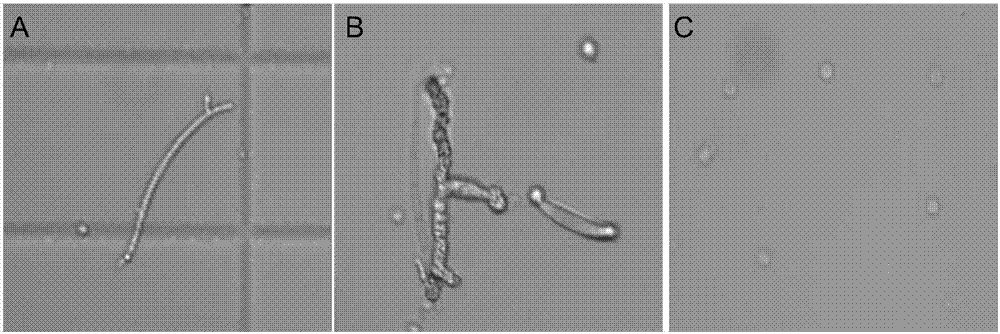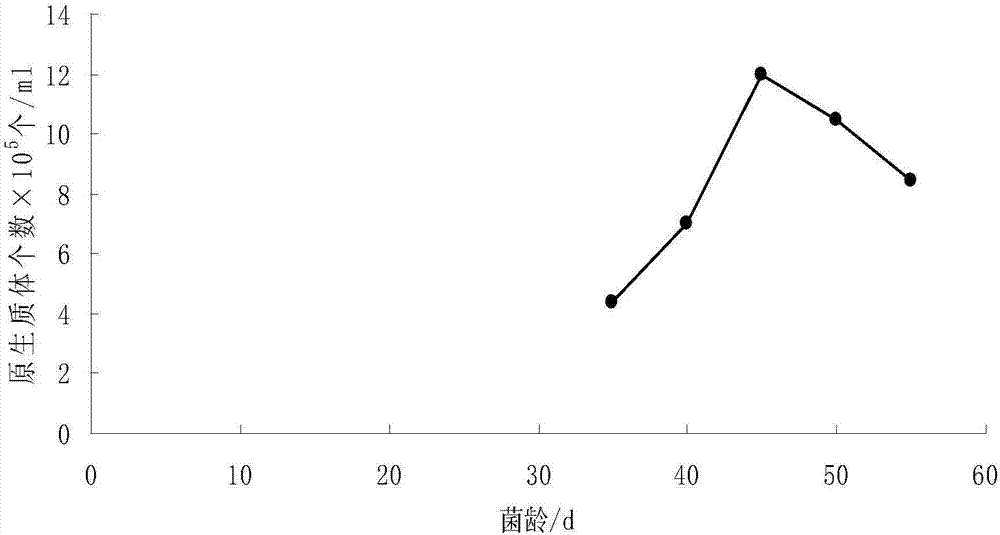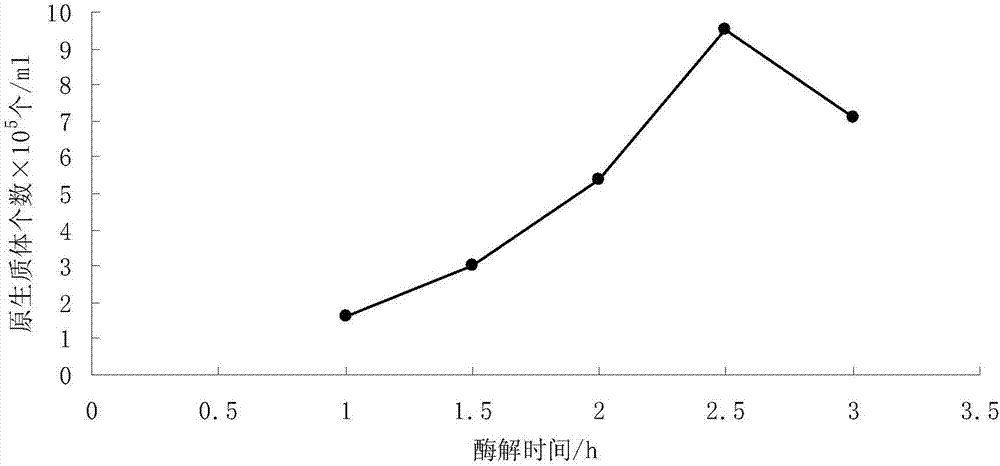Preparation method of tilletia controversa protoplasts
A kind of technology of dwarf black powder and protoplast, which is applied in the field of preparation of wheat dwarf black powder protoplast, and can solve the problems of research, pathogenic molecular mechanism of unfavorable pathogenic bacteria and the like.
- Summary
- Abstract
- Description
- Claims
- Application Information
AI Technical Summary
Problems solved by technology
Method used
Image
Examples
Embodiment 1
[0057] Embodiment 1: Optimization of the method for preparing T. dwarf Tilletia protoplasts
[0058] Cultivate the teliospores of Tilletia tritici in the soil extract medium at a temperature of 5°C and a relative humidity of 50%. Select the cells of different cultivation days, rinse them with sterilized distilled water, and transfer them to In the T19 liquid culture medium, culture in a full-temperature shaker at 5° C. and 150 rpm to collect the mycelia culture solution, and after filtration, centrifuge at 5000 r / min for 10 minutes to collect the mycelia. Take 1g of mycelium, add 20ml of different combinations of enzyme solutions, 28°C, 180r / min oscillating enzymolysis, every 30min, observe the protoplast acquisition with a microscope, set different experimental parameters, and screen out the most suitable bacteria for protoplast preparation Age, enzymatic hydrolysis time, enzyme system, osmotic pressure stabilizer.
[0059] 1. Bacteria culture time
[0060] Cultivate the te...
Embodiment 2
[0076] Embodiment 2: adopt the optimized method to prepare the protoplast of Tilletia tritici
[0077] A mixed enzyme solution of 1.5% collapse enzyme, 1.5% lysozyme and 1.5% helicase was prepared with 1.2mol / L potassium chloride. Then prepare protoplasts according to the following steps:
[0078] (1) Mycelia culture: Cultivate the teliospores of Triticillium dwarfiae teliospores for 35 days at 5°C and a relative humidity of 50% on the solid medium of the soil extract, and then sterilize the teliospores with sterilized distilled water After rinsing, transfer to T19 liquid culture medium, culture in a full-temperature shaker at 5°C and 150rpm for 10 days, and collect mycelium culture solution.
[0079] (2) Enzymatic hydrolysis of mycelial cell wall: filter the collected mycelial culture solution to remove the liquid medium, centrifuge at 5000r / min for 10min to collect mycelium, take 1g of mycelium, add 20mL of mixed enzyme solution, 28°C, 180r / min, shake After 2.5 hours of enzy...
Embodiment 3
[0082] Embodiment 3: the regeneration of Tilletia tritici protoplast
[0083] After the protoplasts prepared in Examples 1 and 2 were resuspended with 1.2 mol / L of potassium chloride, they were respectively coated in PDA and TB3 solid medium, cultured at 5°C for 2-3 weeks, and the grown cells were observed. colony.
[0084] The result is as Image 6 As shown, the protoplasts of T. tritici grow more single colonies on the TB3 medium, but no single colonies grow on the PDA medium. Therefore, the TB3 medium is more suitable for protoplast regeneration than the PDA medium. It can be used for the regeneration culture of the protoplast of Tilletia tritici.
PUM
 Login to View More
Login to View More Abstract
Description
Claims
Application Information
 Login to View More
Login to View More - R&D
- Intellectual Property
- Life Sciences
- Materials
- Tech Scout
- Unparalleled Data Quality
- Higher Quality Content
- 60% Fewer Hallucinations
Browse by: Latest US Patents, China's latest patents, Technical Efficacy Thesaurus, Application Domain, Technology Topic, Popular Technical Reports.
© 2025 PatSnap. All rights reserved.Legal|Privacy policy|Modern Slavery Act Transparency Statement|Sitemap|About US| Contact US: help@patsnap.com



